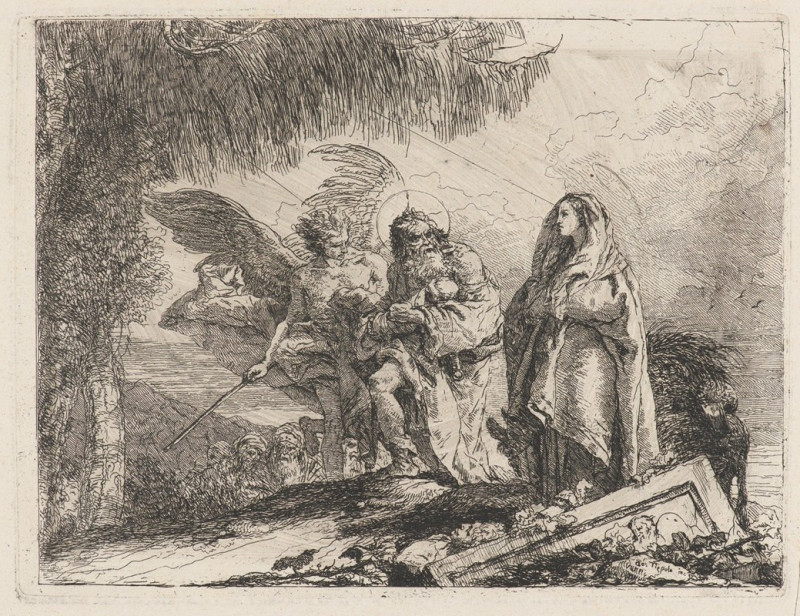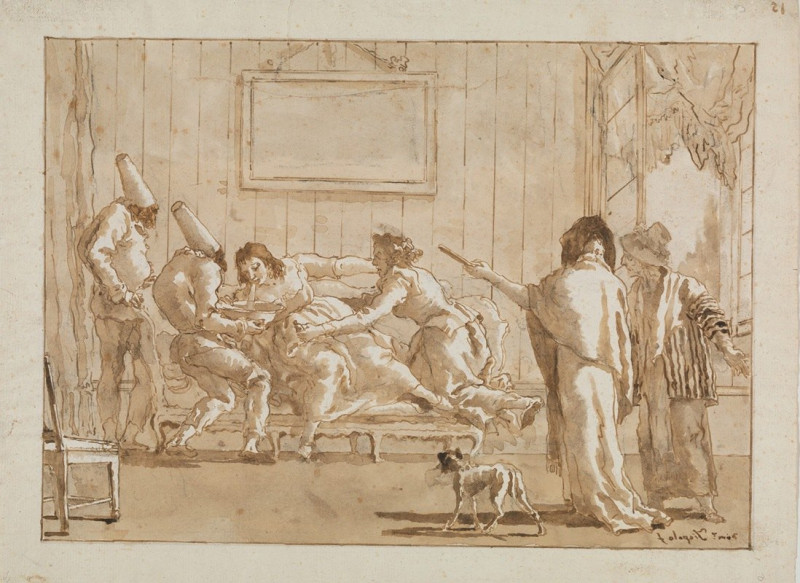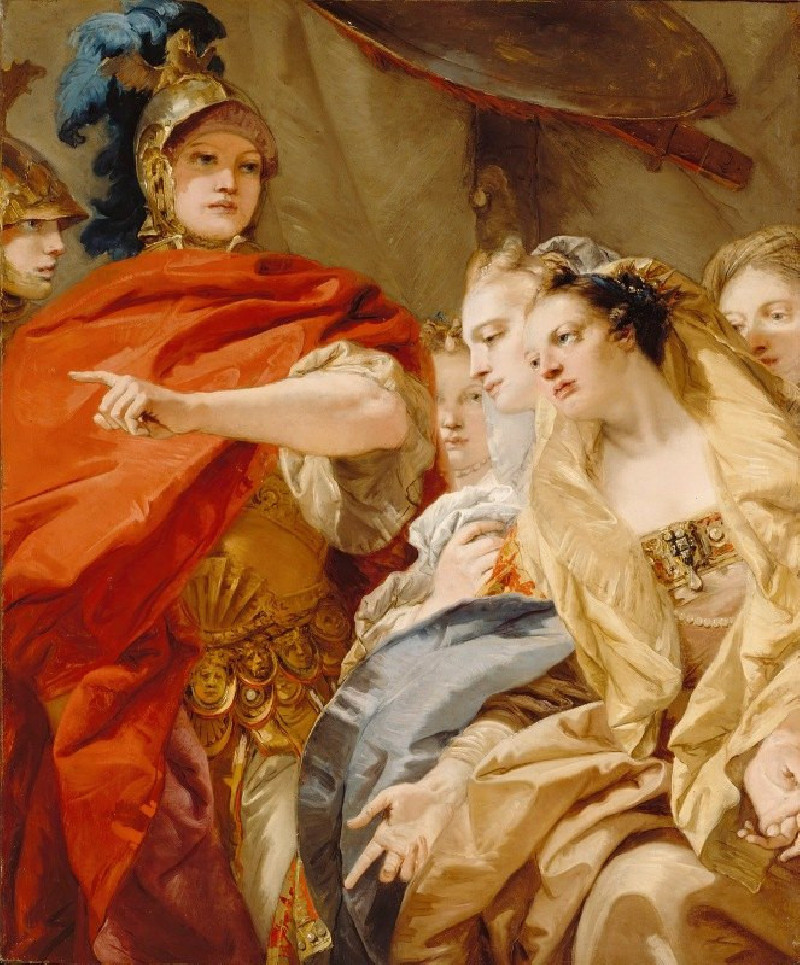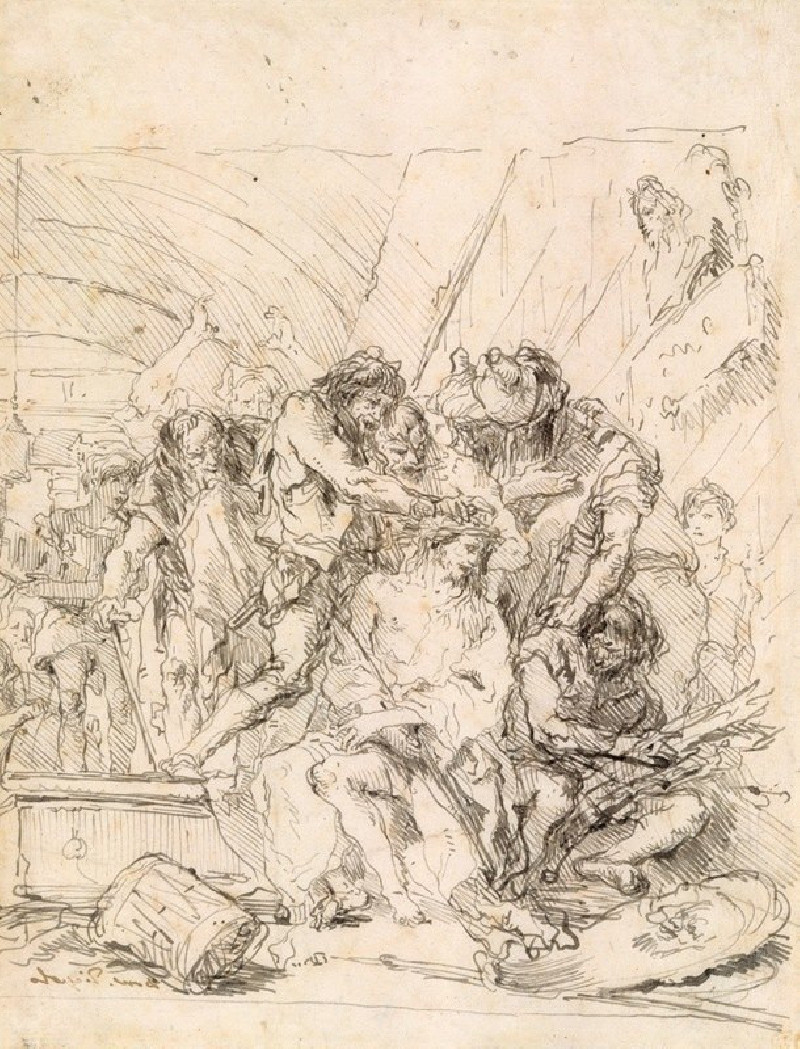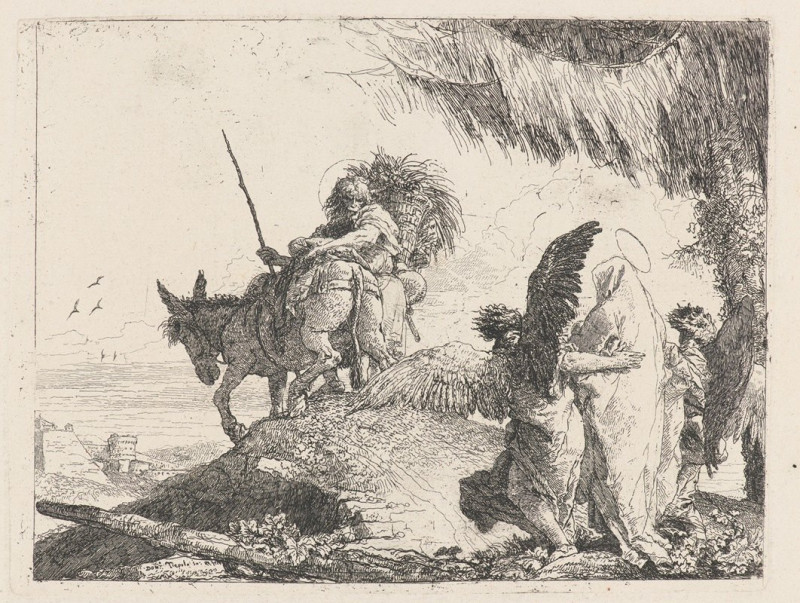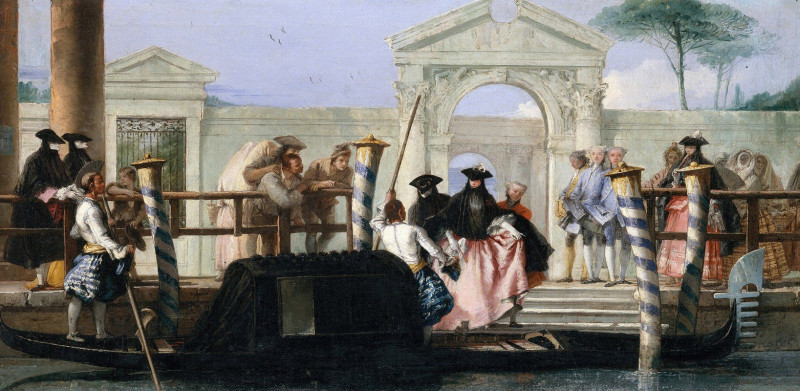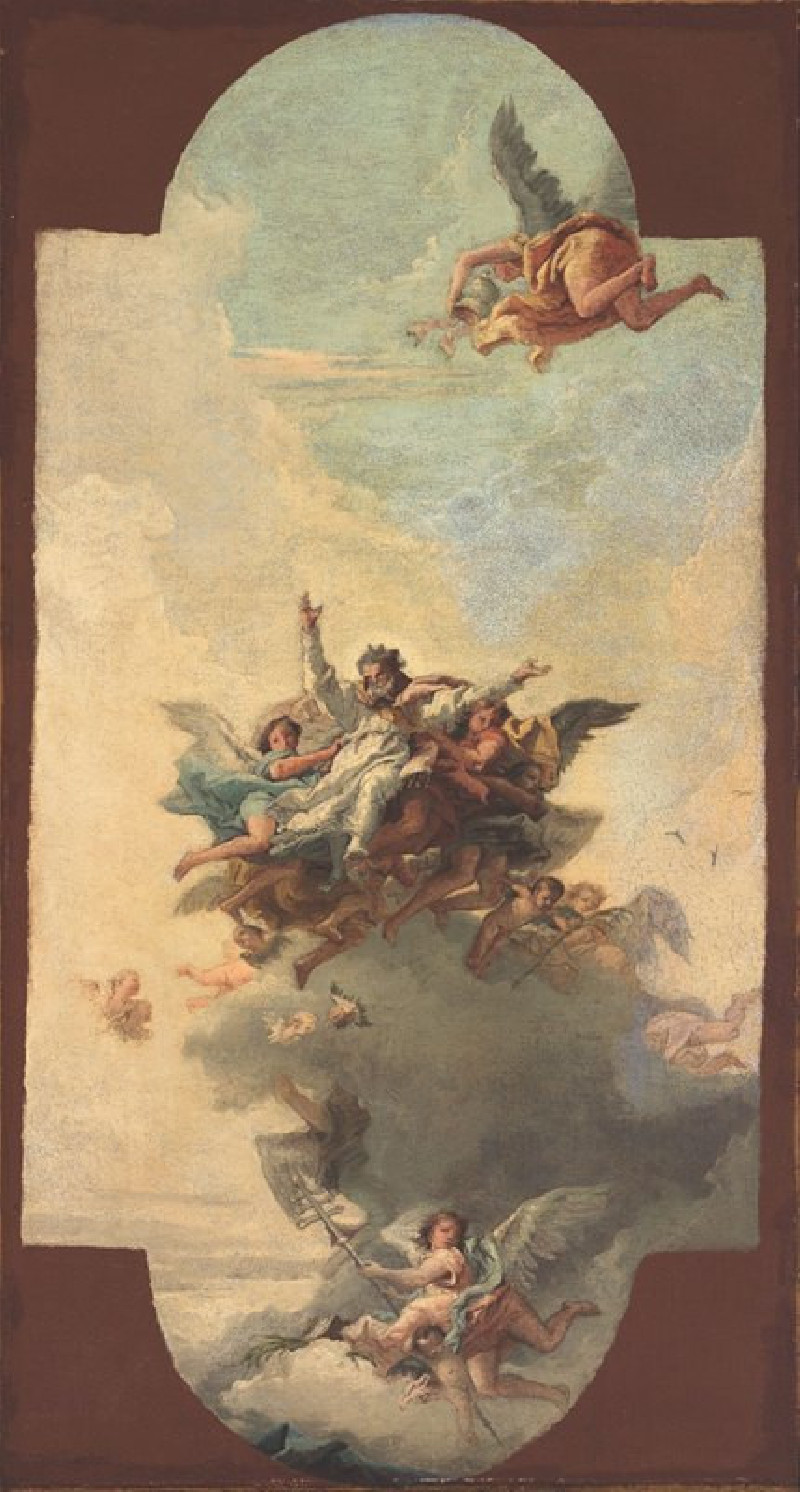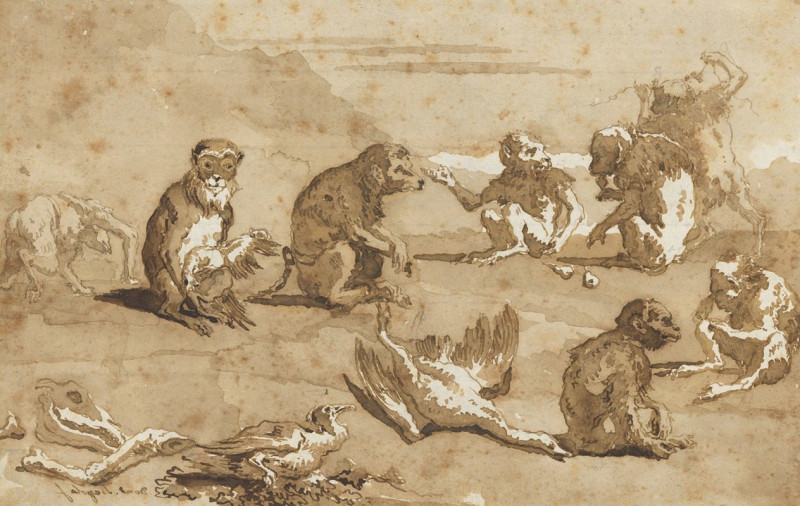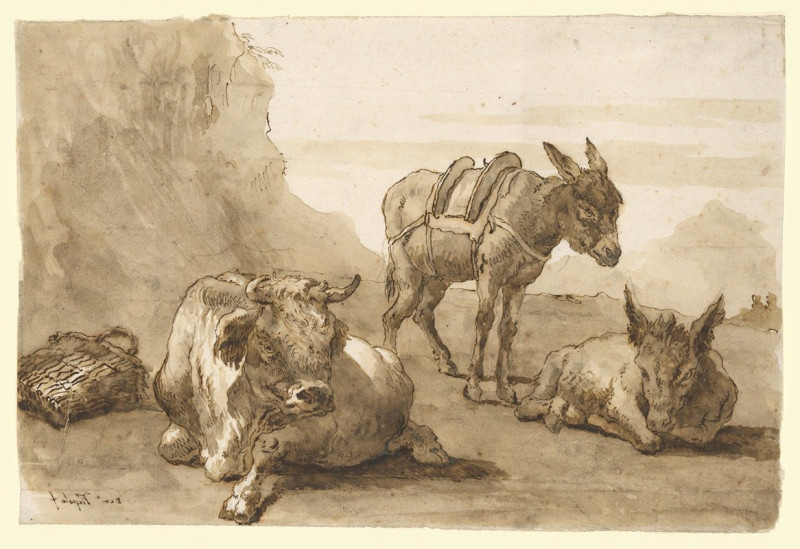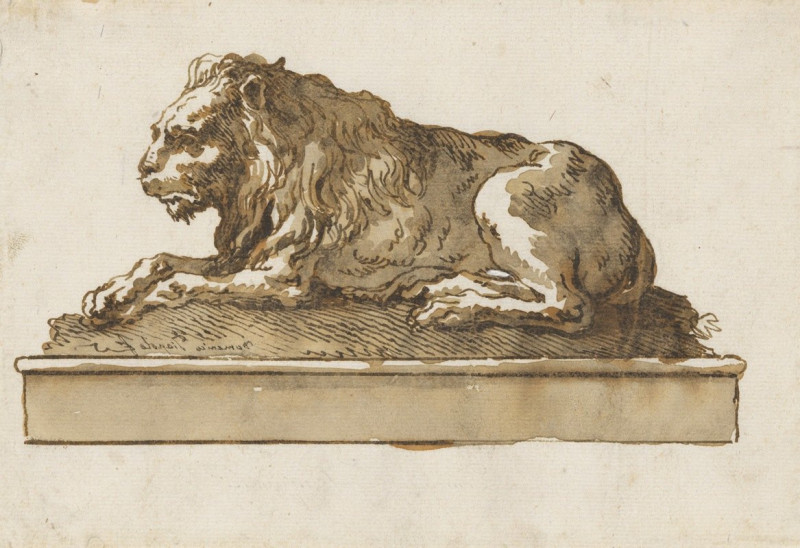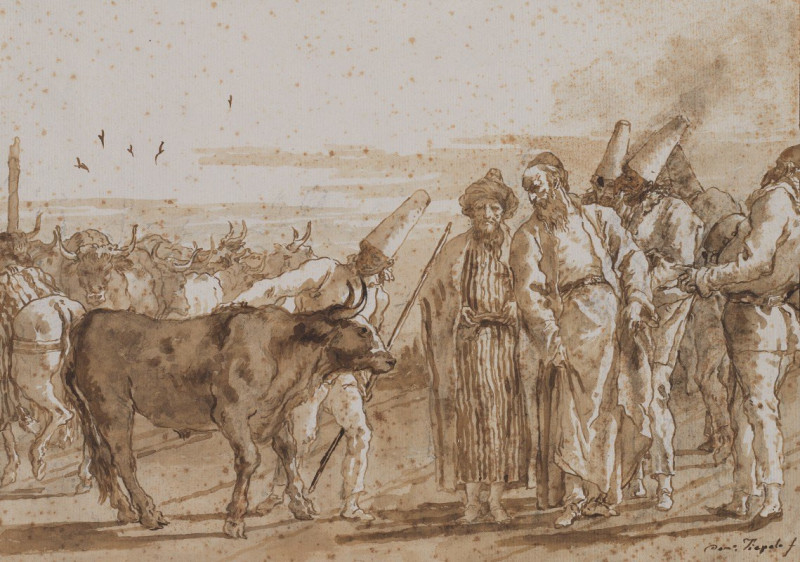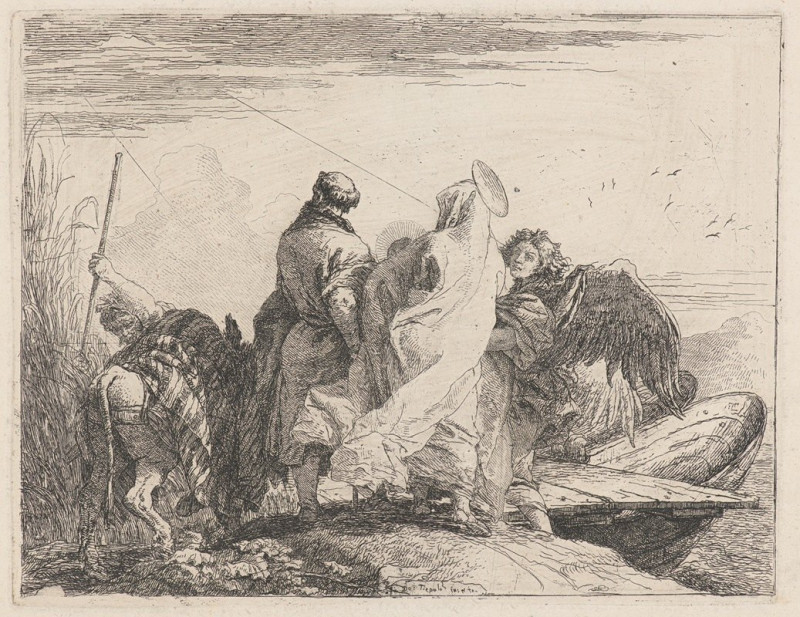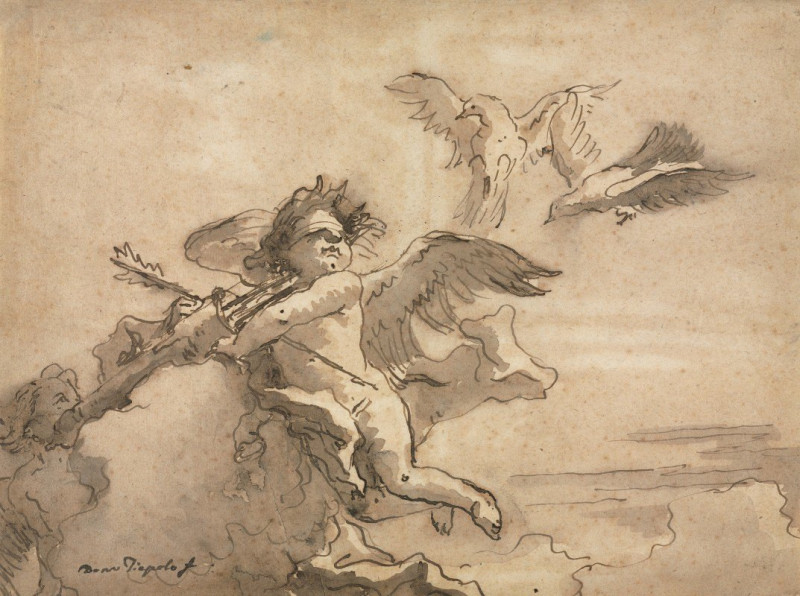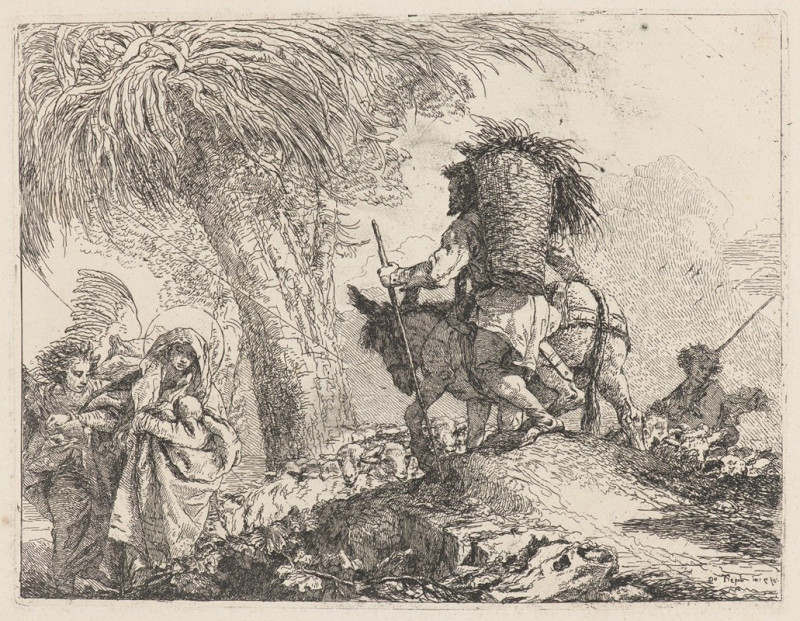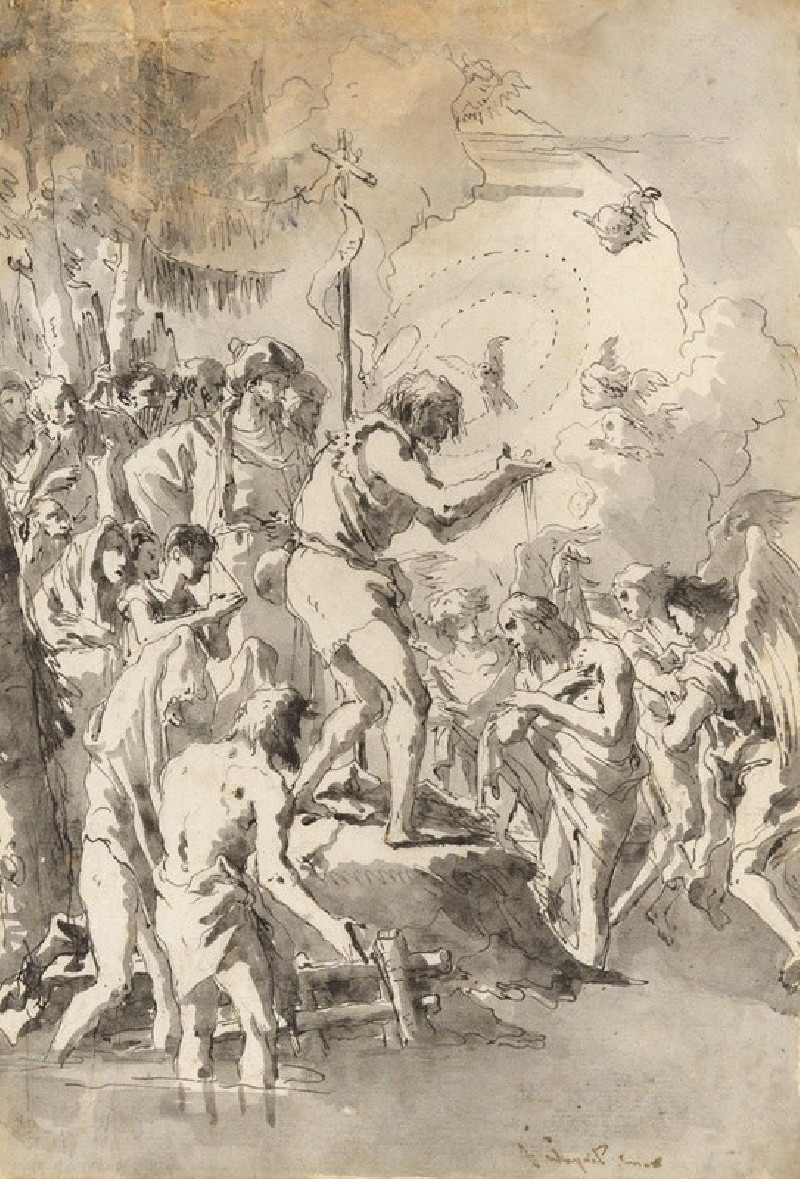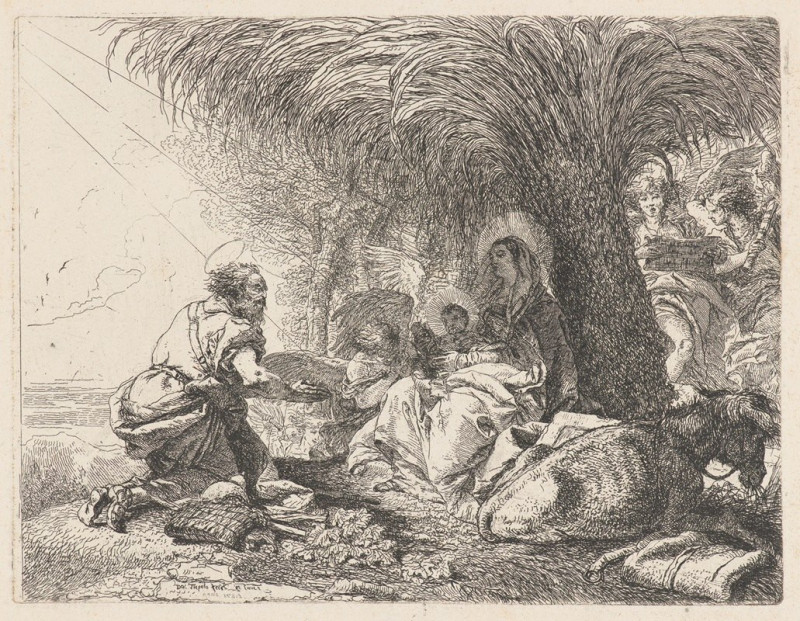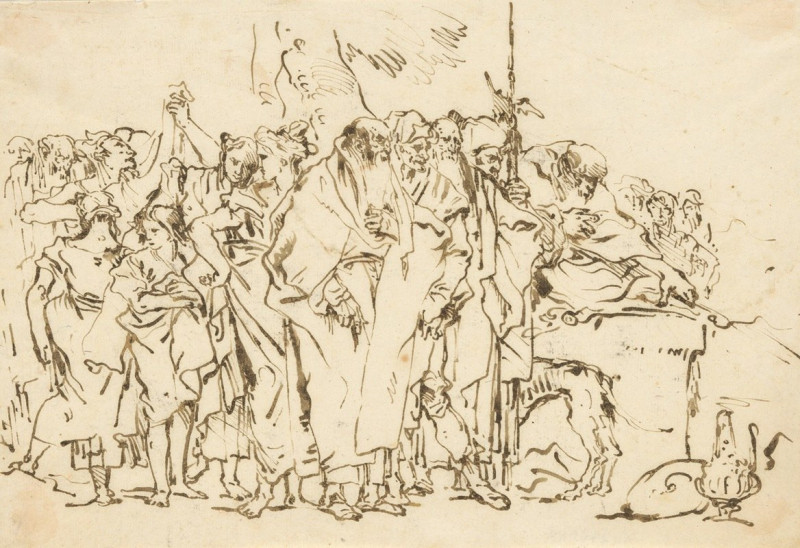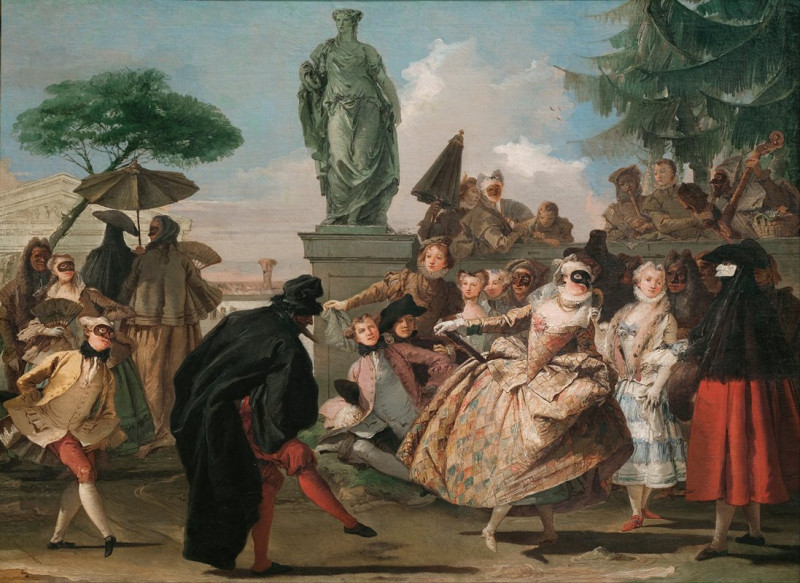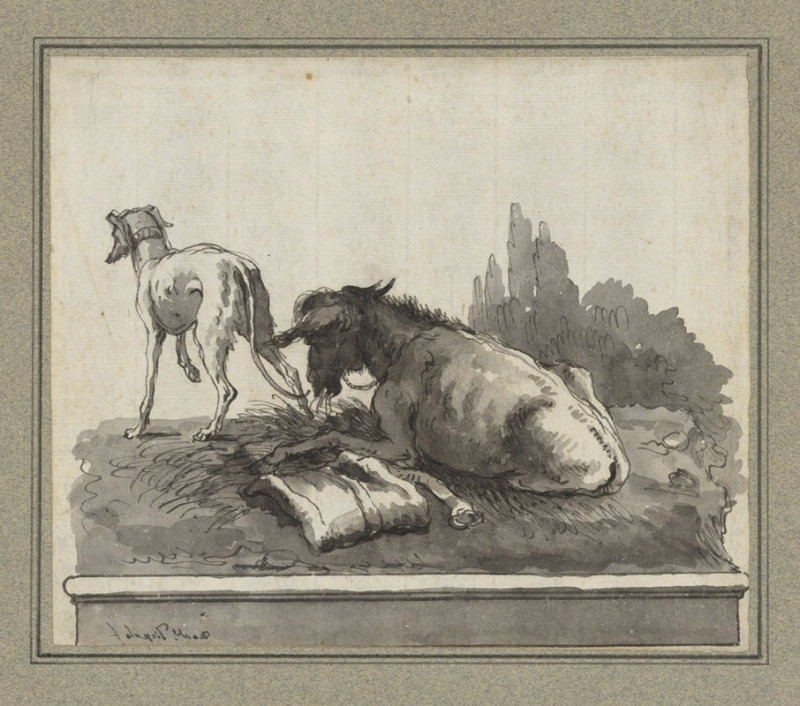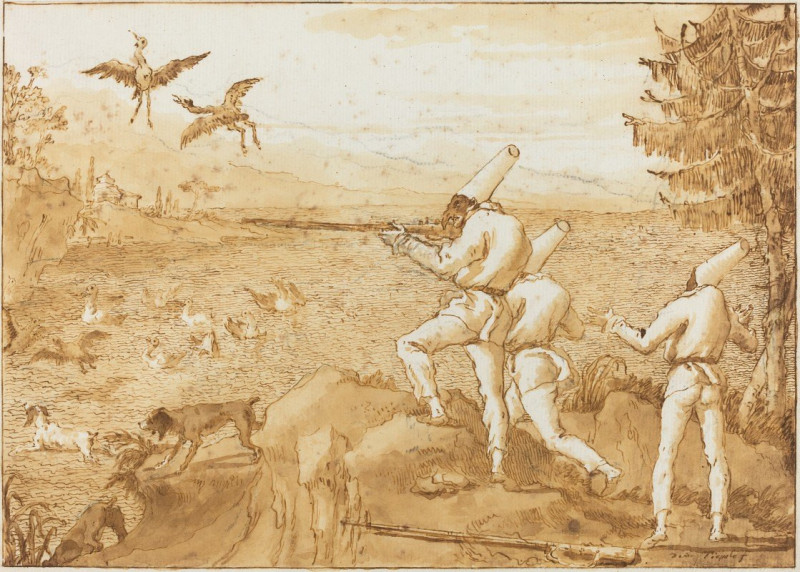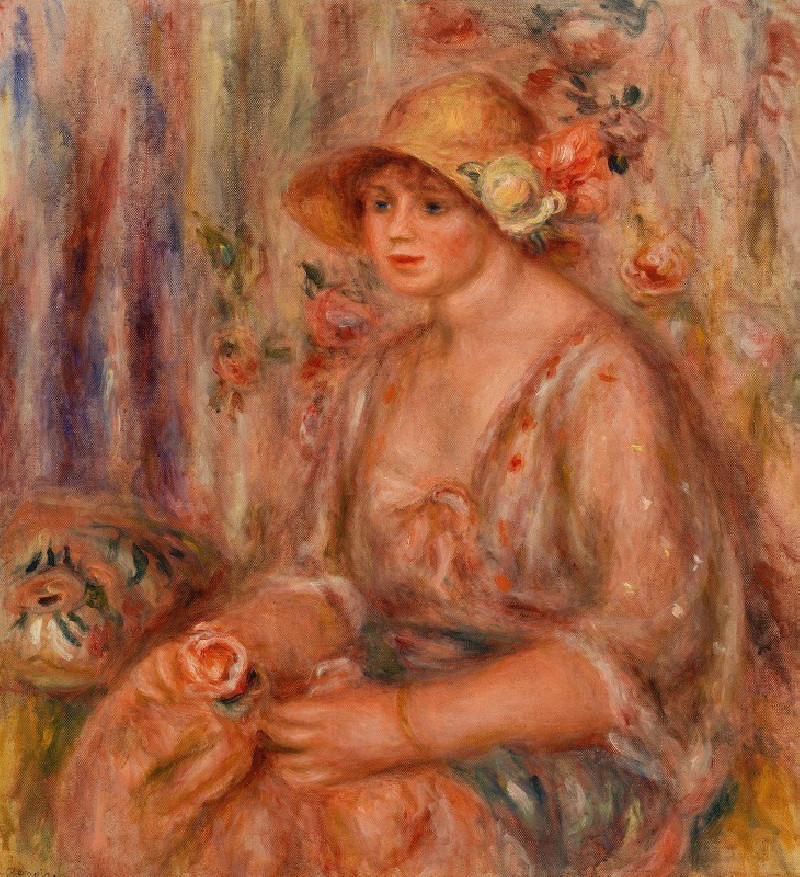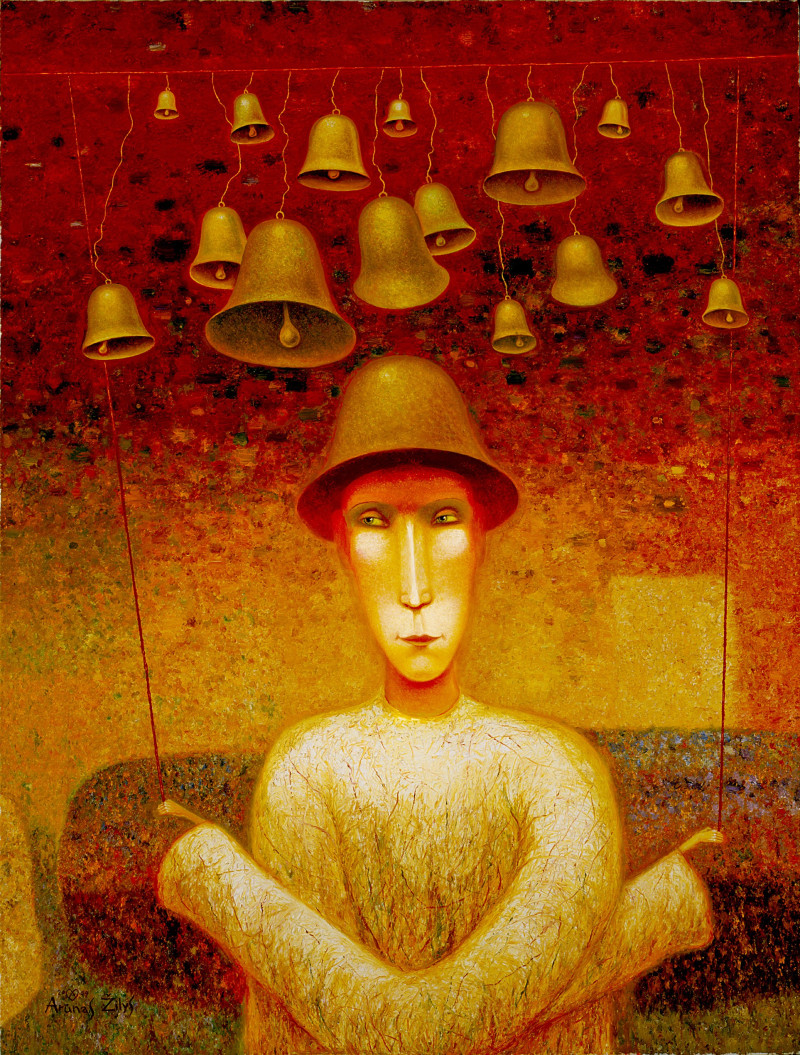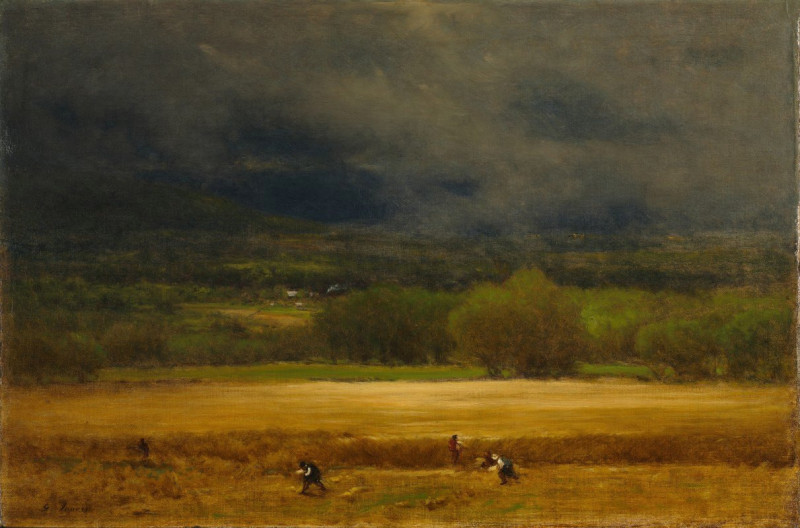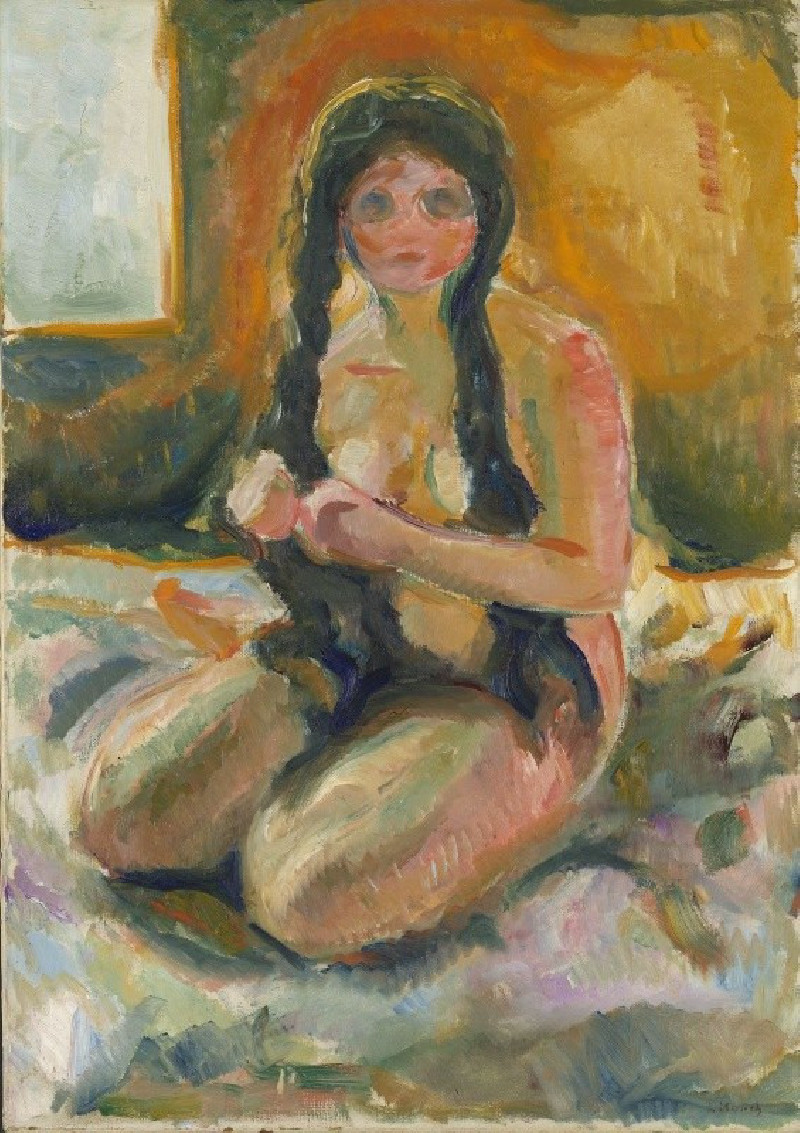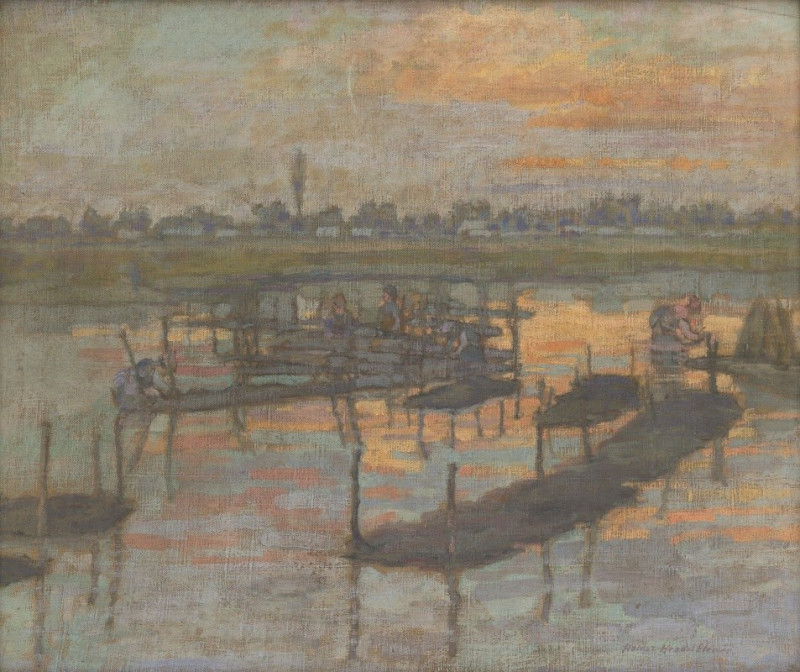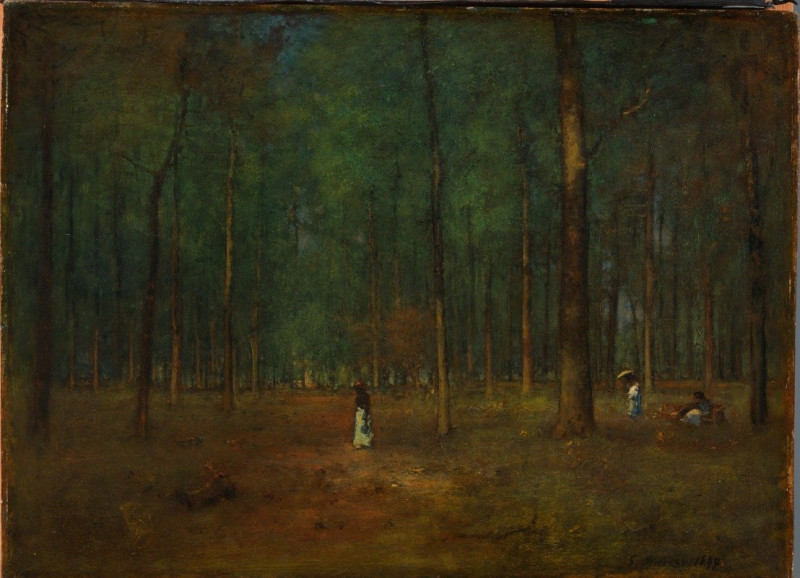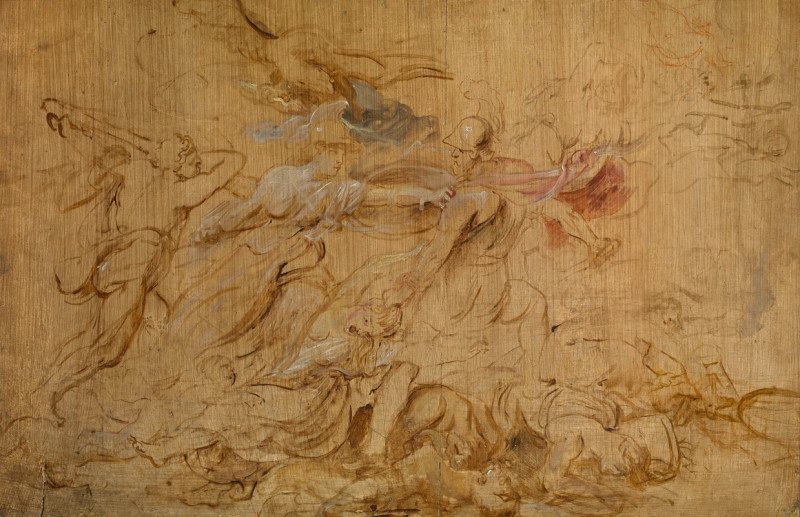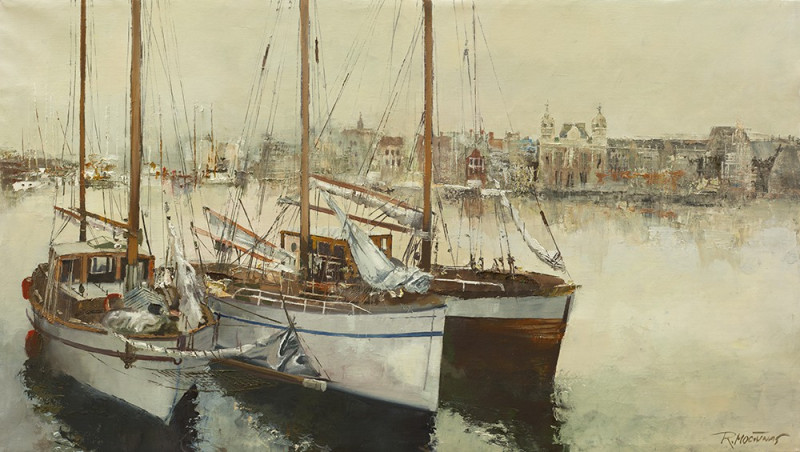The Charlatan (1756)
Technique: Giclée quality print
Recommended by our customers
More about this artwork
Giovanni Domenico Tiepolo’s painting "The Charlatan" provides a vivid and engaging glimpse into 18th-century street life. Created in 1756, this work encapsulates the bustling atmosphere of an Italian piazza where curious onlookers have gathered around a charismatic trickster.Central to the scene is the charlatan himself, clad in a vibrant red coat, energetically pitching his wares and remedies to the assembled crowd. He stands elevated on a makeshift platform, pointing skyward to emphasize the purported virtues of his products. Displayed prominently beside him is a banner depicting a saintly figure, likely used to lend an air of divine approval to his dubious offerings.The crowd is a rich tapestry of society, from elegantly dressed women in wide, hooped skirts to common folk and intrigued passersby. Their varied expressions of skepticism, curiosity, and amusement breathe life into the scene. In the foreground, a small group of people engage directly with the charlatan’s offerings, examining small bottles and listening intently to his claims.The architectural elements in the background, including a detailed archway and sculptural adornments, provide a sense of depth and context, anchoring the chaotic human interactions within a defined urban space. The clear sky in the backdrop and warm, natural light that illuminates the setting further enhance the liveliness and texture of the composition."The Charlatan" by Giovanni Domenico Tiepolo not only showcases the artist's mastery of color and composition but also offers a poignant commentary on the nature of belief, deception, and the universal human attraction to spectacle and entertainment.
Delivery
Returns
Giovanni Domenico Tiepolo (August 30, 1727 – March 3, 1804) was an Italian painter and printmaker in etching. He was the son of artist Giovanni Battista Tiepolo and elder brother of Lorenzo Baldissera Tiepolo.


